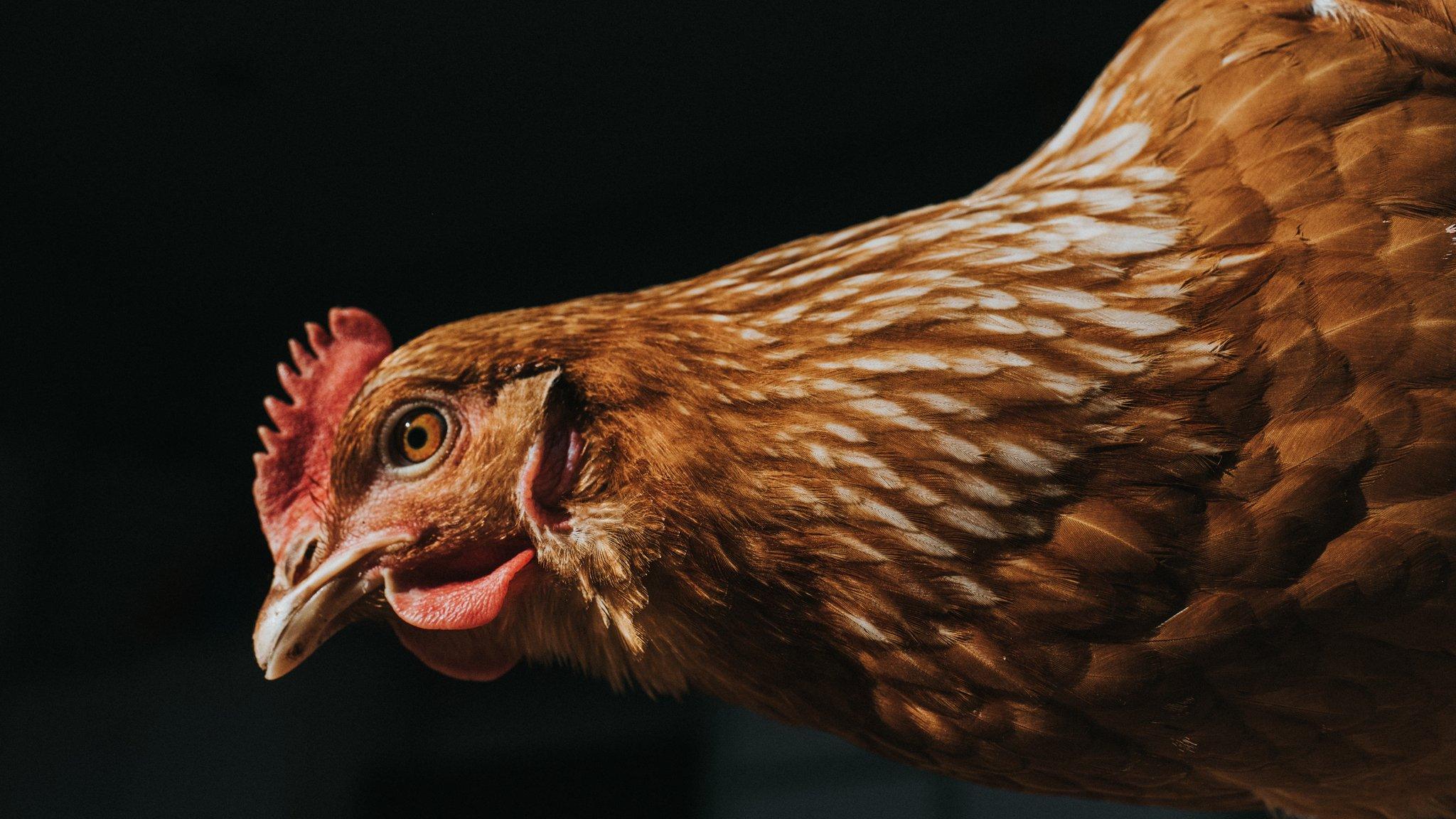St Kilda bird flu deaths spark extinction fears for great skua
- Published
Ranger Craig Nisbet warns of bird flu impact on the great skua
Avian flu affecting the remote St Kilda archipelago threatens to push a wild bird species to the brink of extinction, warn conservationists.
Great skua - also known as bonxie - are described as pirates of the sea because of their aggressive attacks on other birds to steal their food.
Wildlife rangers have found about 120 skua dead so far this breeding season.
They fear further deaths would put severe strain on a globally vulnerable species.
Bird flu was first confirmed last summer on St Kilda, a small group of islands and rocky sea stacks more than 40 miles (64km) west of the Western Isles.
The archipelago is an internationally important seabird breeding ground and home to almost a million birds, including gannets, shearwaters and rare Leach's storm petrels.
It also has the UK's largest colony of Atlantic puffins.
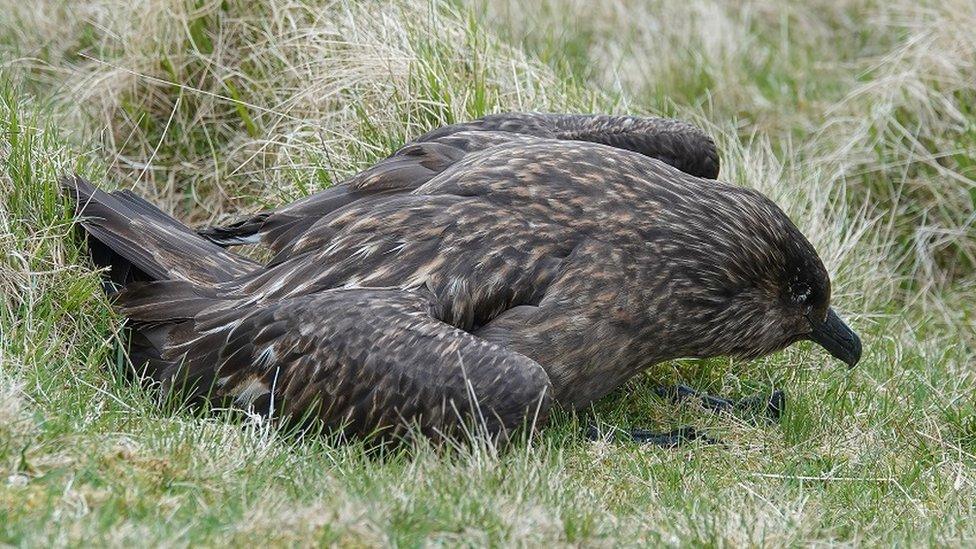
A bonxie found dying by St Kilda ranger Craig Nisbet
Great skua migrate to St Kilda, and other parts of the UK and Ireland, from their wintering grounds off Spain and Africa.
About 56% of the world's breeding great skua pairs are found in Scotland, according to RSPB Scotland. Globally, there are an estimated 16,000 bonxie.
Rangers on St Kilda recorded about 60 dead bonxie last year, with tests confirming the presence of Avian flu.
New casualties started to mount up from the end of April this year.
"It is heart-breaking to witness," said Craig Nisbet, a National Trust for Scotland sea bird and marine ranger.
He said counting dead birds had now become an increasing part of his job as a conservationist.
Mr Nisbet said: "If we are facing another year or two of Avian influenza within the great skua population then their very existence is threatened.
"It is very worrying. This bird is on the verge of extinction if the Avian influenza outbreak continues."
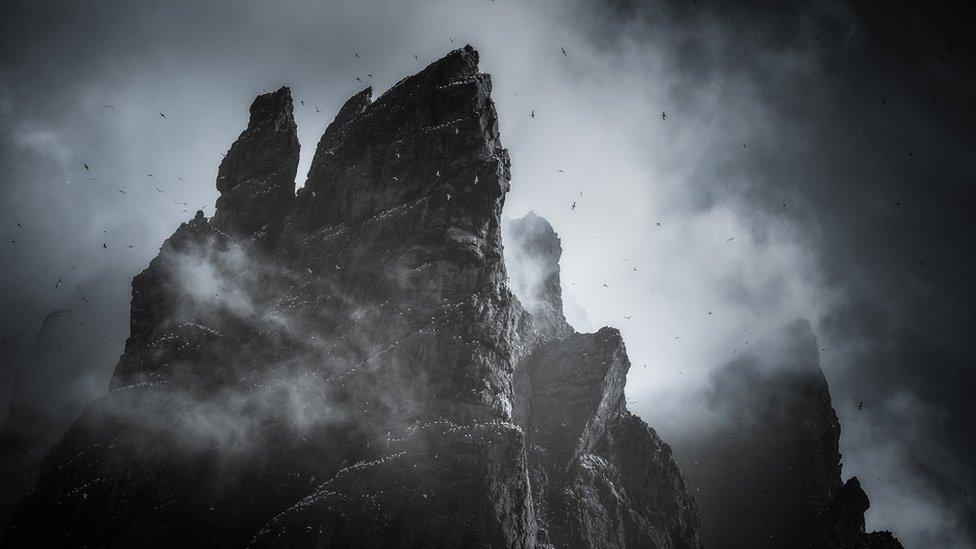
St Kilda's islands and sea stacks are home to almost a million birds
Other species have also been affected and gannets have been found dead in the sea around Boreray, an island just a few miles from the main St Kildan isle of Hirta.
Young gannet were hunted for food on the archipelago before the last islanders left in 1930.
James Hutchinson, another trust ranger, said: "Seabirds are hugely important to St Kilda.
"They are the reason life on these islands was possible for centuries, and one of the reasons why in 2005 St Kilda was given dual Unesco World Heritage status."

Bonxie have also been among the dozens of birds who died in a bird flu outbreak in Shetland - one of Scotland's main breeding ground for the species.
Since the start of the year, the flu has affected birds in parts of Dumfries and Galloway and Aberdeenshire.
Earlier this month, an outbreak was confirmed among the world's largest colony of northern gannets on Bass Rock in the Firth of Forth.
The Scottish government said the 2021/22 winter had seen the largest outbreak of avian flu in the UK to date.
A spokesman said: "This has affected commercial flocks as well as the wild bird population with significant reports of sick or dying seabirds around the Scottish coast.
"The Scottish government is taking the situation very seriously and we are working with partner organisations to monitor and respond to the situation.
"We have this week published updated advice for local authorities, landowners, wildlife rescue centres and members of the public regarding reporting, collection and disposal of wild birds."
Different strains
RSPB Scotland said losses of bonxie were "extremely concerning".
A spokeswoman said the species had been affected by avian influenza last year
"The infection continues this breeding season, with reports of hundreds of dead or dying birds in Shetland, Orkney, the Western Isles and elsewhere," she said.
"Population counts of bonxies are ongoing, but initial findings indicate a decline of 64-85% in some places, with continuing reports of sick birds."
Avian flu is a virus that causes disease in birds. Poultry, pigeons and wild birds, such as geese and ducks, can become infected.
There are different strains of bird flu virus, and most of them do not infect humans.
Domestic poultry are vulnerable and outbreaks can quickly develop in flocks.
More information is available from Health Protection Scotland, external, NatureScot, external and the Scottish government, external.
- Published16 June 2022
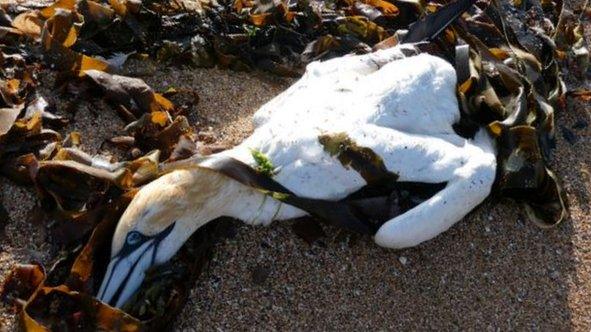
- Published1 June 2022

- Published7 June 2022
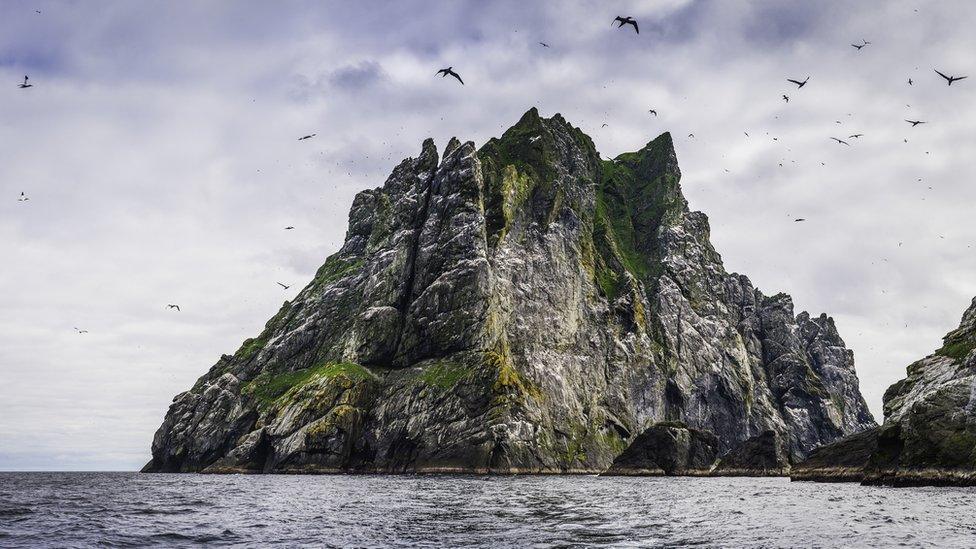
- Published29 March 2022
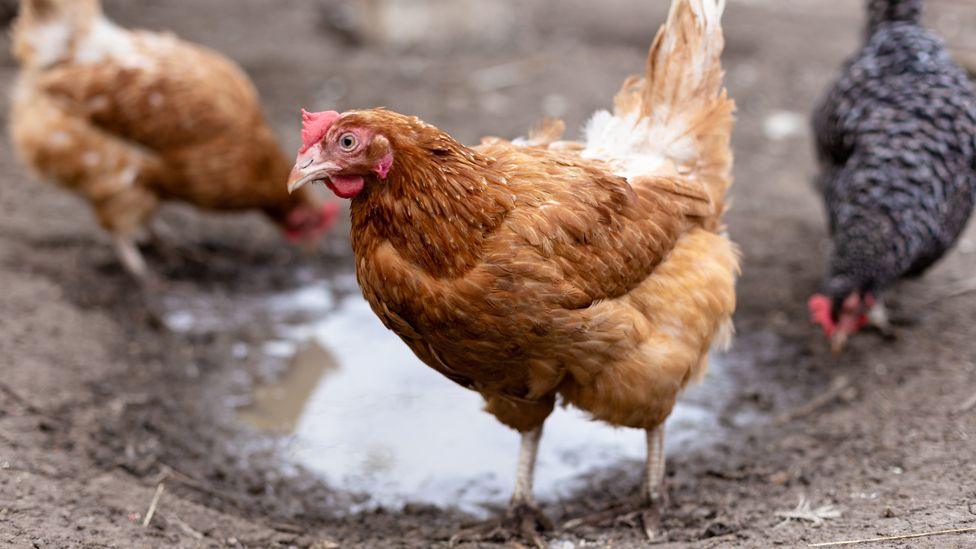
- Published20 January 2022
